
David Goody
-
Posts
26 -
Joined
-
Last visited
Content Type
Profiles
Forums
Blogs
Gallery
Events
Store
Posts posted by David Goody
-
-
I have received a response from the Bundesarchiv in Berlin who appear to have taken over the duties & records of the WASt. The covering letter mentions there is a message dated 24 May 1941 in the unit Horstcompanie Fliegerhorst-Kommandantur Konigsberg/Nm. erfasst (Bundesarchivsignatur: B 563/03945 Seite 053). The covering letter also states the next of kin is Rosl B. with the address Berlin-Lankwitz, Tautenburgstr. 24. Attached to the letter is an index card concerning Fritz Buschmann. I will place a copy here with my attempt at translation & would greatly appreciate any advice on its contents please, my reading is that he was assigned to the 9 Luftwaffe Field Division on 15/9/43 and was at Nikolskoye 60 km from Leningrad. There appears to be a date 23 May 1951 with reference to May 1944, which I assume relates to him being killed or missing. Many thanks. Front of card follows.
Reverse of card
0 -
Thank you. The albums are primarily photos & postcards of Australian soldiers in the Middle East & North Africa. Looking at the albums it appears there were captions in pencil that were overwritten in pen. The albums are definitely Australian, I suspect he obtained the German photos from perhaps Intelligence Officers at the HQ he was guarding, the battle field or perhaps at one of the POW ‘cages’ he guarded. Unfortunately there are no clues in his war diaries which I have transcribed.
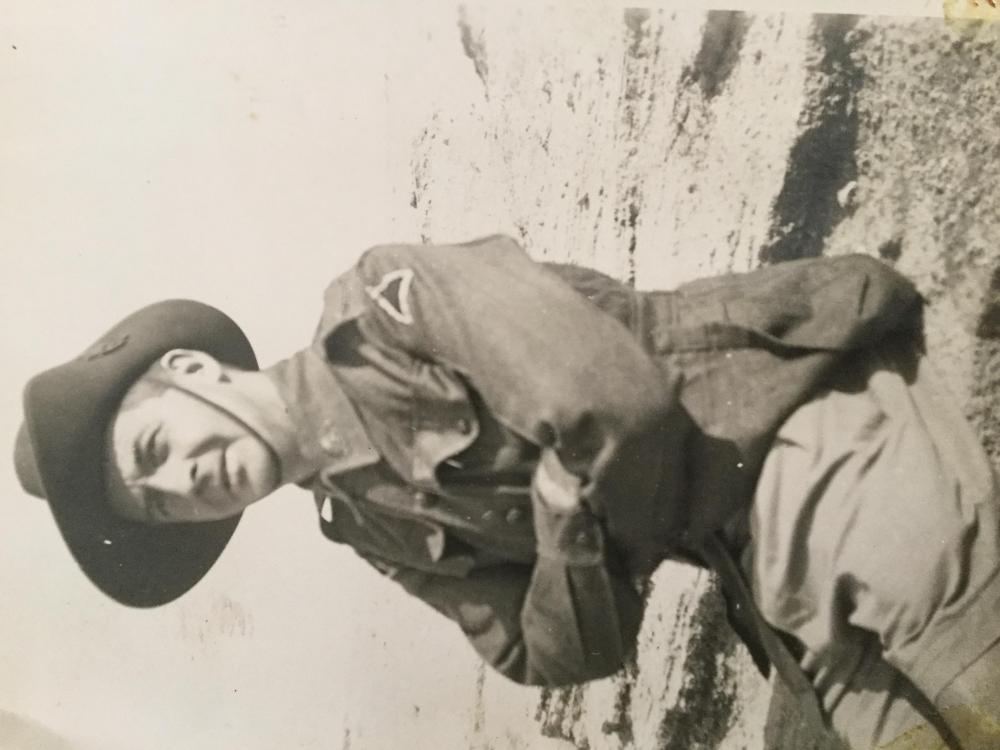 0
0 -
-
-
My brother & I have been bequeathed our late great uncle’s effects including his personal military diaries & photograph albums from his service in the Second World War. Included in the albums are photographs taken by German soldiers in North Africa and Crete. We have decided to display them here so that they are not lost to history. By way of background our great uncle was Private Thomas William Cure NX15442, A Company, 2/1 Australian Headquarters Guard Battalion. His company was assigned to the headquarters of the 9 Australian Division. He served from 17 May 1940 to 19 November 1945 in Palestine, Libya including the siege of Tobruk, Syria, Egypt including the battles of El Alamein, New Guinea & Netherlands East Indies. We don’t know how he obtained the photos, & some of his captions I suspect are not accurate. We invite any feedback on the photos.
0 -
I agree that he may have fallen on 22 January 1944. I note that there is a post on the Axis History Forum concerning division commander Generalmajor Ernst Michael dated 30 December 2018 that states
’According to a report filed by Abwicklungsstab in NARA T-78 R-139, the command of 9. Lw-FD in Tuganizy was blown up (probably a bomb planted by partisans) on 22 January 1944. The DivFhr, Oberst Michael, and several officers were killed. Oberst Geerkens of JagRgt 17 (L) was mortally wounded in the explosion and died the next day (that would have been 23 January). Of course he could NOT take over the command. Command fell to Major Scheler of PzjgAbt 9 (L) until 26 January, when Oberst Nebel of AR 9 (L) took over.’
0 -
Thank you both for your very informative replies. I will keep this thread up to date as I learn more.
An early war period photograph
On 23/01/2019 at 02:05, Gordon Craig said:David,
There are a couple of places in Werner Haupt's book "ARMY GROUP NORTH - THE WEHRMACHT IN RUSSIA 1941-1945" where the 9.Luftwaffe Field Division is mentioned. On page 198 he says "The front situation at the beginning of 1944 showed the army group to be in the following positions as follows (from left to right)" These positions refer to a map in the book.
"The Orienbaum bridgehead was surrounded by the newly arrived III Panzer Corps. Here, they had available: SS Police Division, SS "Nordland" Division, and the 10th and 9th Luftwaffe Field Divisions." On page 203 he says "The Soviets attacked without pause. The 2nd Shock Army penetrated into the Ropsha area, with the CVIII Rifle Corps, while elements of the 42nd Army occupied Krassnoe Selo. The pincers appeared to be closing around the 126th ID and the 9th Luftwaffe Field Division." Later he says "...Colonel Fischer (Commander of the 126TH ID) decided to quickly regroup the division and break out of the encirclement...." and "The majority of the 126th ID, the 9th Luftwaffe Field Division, and the 530th Naval Artillery Battalion made it through. The heavy weapons, almost all of the horses, and all baggage was left behind."
This was the only mention made in the book, at least in the first half of 1944, of the 9th Luftwaffe Field Division. While this won't help much in your research it does confirm location the position of the unit of concern in January of 1944. The III Panzer Corps is mentioned latter in 1944 in action in this part of Russia but no mention of the composition of the corps.
One suggestion I would like to make is that you ask your questions on the WAF if you haven't already done so. They have a sub forum for research on individuals in the Wehrmacht and there might be some useful info there.
Regards,
Gordon
On 23/01/2019 at 02:05, Gordon Craig said:David,
There are a couple of places in Werner Haupt's book "ARMY GROUP NORTH - THE WEHRMACHT IN RUSSIA 1941-1945" where the 9.Luftwaffe Field Division is mentioned. On page 198 he says "The front situation at the beginning of 1944 showed the army group to be in the following positions as follows (from left to right)" These positions refer to a map in the book.
"The Orienbaum bridgehead was surrounded by the newly arrived III Panzer Corps. Here, they had available: SS Police Division, SS "Nordland" Division, and the 10th and 9th Luftwaffe Field Divisions." On page 203 he says "The Soviets attacked without pause. The 2nd Shock Army penetrated into the Ropsha area, with the CVIII Rifle Corps, while elements of the 42nd Army occupied Krassnoe Selo. The pincers appeared to be closing around the 126th ID and the 9th Luftwaffe Field Division." Later he says "...Colonel Fischer (Commander of the 126TH ID) decided to quickly regroup the division and break out of the encirclement...." and "The majority of the 126th ID, the 9th Luftwaffe Field Division, and the 530th Naval Artillery Battalion made it through. The heavy weapons, almost all of the horses, and all baggage was left behind."
This was the only mention made in the book, at least in the first half of 1944, of the 9th Luftwaffe Field Division. While this won't help much in your research it does confirm location the position of the unit of concern in January of 1944. The III Panzer Corps is mentioned latter in 1944 in action in this part of Russia but no mention of the composition of the corps.
One suggestion I would like to make is that you ask your questions on the WAF if you haven't already done so. They have a sub forum for research on individuals in the Wehrmacht and there might be some useful info there.
Regards,
Gordon
Thank you again so much Gordon.
Pardon my lack of knowledge, would you please let me know what the WAF is?
Thanking you
David
0 -
I have been researching the military career of Major Heinrich Fritz Buschmann, full details to date are in the section titled ‘Germany: Third Reich: Awards, Decorations & Medals (Wehrmacht)’.
I suspect he went missing during the Soviet breakout from the Oranienbaum pocket in early 1944 whilst serving in the supply units of the 9.Felddivision(Luftwaffe). From what I have read on the internet the division was pretty much destroyed in that action. I have been unable to find any detail on that critical time.
Would anyone be able to assist me please on further understanding the fate of the division, especially the rear echelon soldiers?
2 minutes ago, David Goody said:I have been researching the military career of Major Heinrich Fritz Buschmann, full details to date are in the section titled ‘Germany: Third Reich: Awards, Decorations & Medals (Wehrmacht)’.
I suspect he went missing during the Soviet breakout from the Oranienbaum pocket in early 1944 whilst serving in the supply units of the 9.Felddivision(Luftwaffe). From what I have read on the internet the division was pretty much destroyed in that action. I have been unable to find any detail on that critical time.
Would anyone be able to assist me please on further understanding the fate of the division, especially the rear echelon soldiers?
0 -
It seems likely Fritz Buschmann was reported missing in early 1944 during the Soviet offensive from the Oranienbaum pocket. It also appears he was in the supply arm of the 9 Luftwaffe Field Division. I have been unable to find much on the web about the fate of the division except it was pretty much destroyed in the path of the offensive. Would anybody be able to further enlighten me please on this period of the division’s service, especially the fate of rear echelon division members?
0 -
-
I apologise for the late response, I have been using Google Translate & various on line German military abbreviation lists to translate as best I can the 10 pages from the Bundesarchiv, Department Military archives. All the documents are from 4 May to 17 July 1943 and concern his redeployment to the 9 Luftwaffe-Feld Division. Whilst this is a very short snapshot of his military career, it shows that he survived the Stalingrad airlift and his ultimate fate was likely in the Baltic states/ north west Russia area.
Page 1: Bundesarchiv file cover page for Hptm. D. R.z. V. Fritz Buschmann Geb. dat. 4.10.91, Lw.
Page 2: Appears to be a Luftwaffe file front page, no other information other than above.
Page 3: Copy of Battalion Leader School, B Educational Group, 5 Infantry Educational Department Evaluation dated 4.5.1943 on Hauptmann Buschmann. It concerns his participation in the battalion leader course from 12.4.43 to 8.5.43. States his unit was Feld Ausb. Regt. 1 (Field Training Regiment 1). His career includes the term R.D.A. (M.Ord.Nr.) 1.1.42.
I. Outer Appearance and Attitude: Great appearance, good attitude, very flexible
II. Rating as a person, troop leader and instructor: Has worked with attention. On a tactical level is missing any basis to build with success on it. Infantry understanding is very low.
III. Final Judgment: Not suitable for battalion leader.
IV. Statement of the Instructor Commander: There is no infantry basis. Troop assessment did not exist.
V. Statement of the Commander of the School: Agreed
Page 4: Evaluation reports cover page dated 10.6.43 from High Commander Field Training Regiment and Training Battalion Luftwaffe, Boelckestr. 12 Braunschweig to The Minister of Aviation and Commander in Chief of the Air Force, Leipziger Str. 7 Berlin. Concerns evaluation notes for officers who took part in the 8th Battalion Leader course in Antwerp. The evaluation reports were for Oberstlt. (Erg.O.) v Hullesheim (Friedrich), Hauptmann (d.R.z.V.) Buschmann (Fritz), Hauptmann (d.R.) Gribl (Wilhelm)
Page 5 & 6: Original evaluation at Page 3 signed Lieutenant Colonel and Head of the Education Department, and by Lieutenant Colonel Training Commander, and by Colonel and Commander.
Page 7: War assessments cover page dated 27.7.1943 to the 1.8.1943 over officers of the Reserve Luftwaffe Field Units. From Air Fleet Command 1 to the Minister of Aviation and Commander in Chief of the Air Force. The attached war evaluations about the following officers of the Luftwaffe Field Units for submission. Hptm. Buschmann, Fritz 9. Lw.Feld-Div., Hptm. Drobek, Richard 10. Lw. Feld.Div., Hptm. Hoffmann, Friedrich 9. Lw. Feld-Div., Hptm. Wilde v. Wildemann, Lothar A.R. 9 (L).
Signed Lieutenant Colonel for the Air Fleet Command The Chief of the General Staff.
Page 8 & 9: War assessment to the 1.8.43 dated 6 July 1943 from the 9. Luftwaffen-Felddivision, Divisional Command Post for Hauptmann (d.R.z.V.) Fritz Buschmann, married, civil profession businessman, able bodied for war. Since 10.5.43 admission as Divisional Supply Leader, Konigsberg/Nm. Berlin VIII.
Short Assessment: Decent character, ambitious, restraint in some situations is the case. He is a National Socialist and passes on this thought. He had no opportunity to be saved from the enemy. He had worked with great interest in the tasks of the unit, it is expected he will fill this post later. He is averagely gifted and physically capable. He could not acquire infantry experience here. He is suitable as the leader of covered columns, because he brings with him the necessary know how.
Summary Judgment: Average.
Signed by Major General and Division Commander, and the Commanding General of the III Luftwaffe Field Corps on 18 July 1943.
Page 10: Addendum to the assessment dated 17.7.43 from 9. Luftwaffen Felddivision for Hauptmann Buschmann. Hauptmann Buschmann as part of the briefing as divisional supply leader also commanded for 8 days. A judgment about his fitness cannot be given after this short time. However it is possible with mental ability that he will prove himself after further instruction.
Signed Colonel and Depury Division Commander.
I trust you find this interesting and welcome any observations from this evidence about the military career of Hauptmann Buschmann. I am still awaiting any records that may be located by Deutsche Dienststelle.
0 -
Pierce was right. I have received records from the Bundesarchiv, Department Military Archives. They have him recorded as Hptm. d.R.z. V. Fritz Buschmann, date of birth 4.10.1891. I am translating the records consisting of 10 pages which deal with him being trained as a battalion leader in the 9. Luftwaffe-Felddivision in 1943. I am totally surprised that the Luftwaffe would transfer a pilot to an infantry unit.
0 -
9 hours ago, bolewts58 said:
Lots of Germans got this cross as they made up most of the Russian West Army. He possibly might have flown with one of the Freikorps Flieger Abteilung (FA 427 or 429) in The Russian West Army. But, as there are few records available except concerning which German air aces were in what Freikorps, I might only be able to find out his squadron, if I knew what unit he was in during WWI by doing some cross-referencing and a bit of detective work, which I'm happy to do. But, it's a long shot unless you have some paperwork.
Thank you, Do any of the ribbons in the attached photo match the award please?
0 -
4 minutes ago, bolewts58 said:
As I thought. This is quite a nice example of the Maltese Cross of the Russian West Army, which is much rarer than the Randow Cross. This is consistent with his Baltic service and much more interesting than if he had just been in Detachement von Randow.
Here's a picture of Pavel Bermondt-Avalov wearing the same cross.
Thank you very much. This research project is becoming more & more intriguing. Are you able to give me any background please on the basis of it being awarded to a German. Heinrich Buschmann was a pilot, could this be a clue?
Kind regards
David
0 -
3 hours ago, bolewts58 said:
I'd like to see a better picture of the Randow Cross as I think it may not be a Randow Cross, but the Maltese Cross of the Russian West Army. They are very similar. But, the Russian West Army Cross is thicker in the middle and has a wider silver frame.
I trust this assists.
Kind regards
David
0 -
4 hours ago, J Temple-West said:
So, let us say 1895... that would put him over the top for operational flying duties.
I think you'll find that he was probably an instructor at one of the Luftwaffe flying schools, as so many WW1 flying veterans were.
When the planning for the Stalingrad airlift was taking place (which turned out to be an absolute catastrophe, and in effect began the demise of the Luftwaffe and the end of Germany's war), it was estimated that to sustain a fighting force of 250,000 men would need air drops of between six hundred and 750 tons per day. The Sixth Army’s supply requirements were initially established at 750 tons per day, but later reduced to five hundred tons per day. The required aircraft and crews for the Stalingrad airlift assembled on short notice from the advanced flight training school. Sending many of the Luftwaffe’s most experienced instructor-pilots contributed to degradation in the quality of new pilots being trained. Every single available aircraft mobilized for the Stalingrad airlift.
On 23 November 1942, Lieutenant General Hans-Georg von Seidel, the Quartermaster General of the Luftwaffe, ordered all Ju-52s (transport aircraft); Ju-86s (trainer; completely inappropriate as a transport); FW-200s and Ju-90s (long-range reconnaissance aircraft); He-111s (long-range bomber), from every unit, staff, ministry, and the Office of the Chief of Training. Six hundred aircraft along with some of the best flight instructors were stripped away from the training facilities. Specialized training schools were closed due to the ruthless efforts taken to ensure the success of the airlift. By early December Fourth Air Fleet had approximately five hundred aircraft at their disposal, with more becoming available as the operations progressed. Germany’s top military leaders were convinced that the number of aircraft now dedicated to the operations was sufficient to meet the logistical needs of the Sixth Army….how wrong they were.
The airlift fleet was based at Tatsinskaya and I think you will find that this was where he will have been based until the end.
As to the German archives…vast amounts of period records/documents were destroyed during, and after the war. If Major Heinrich Fritz Buschmann does not appear on the lists available to historians (such as the ones cited) then I think that they will have been lost….but let us keep our fingers crossed.
Please let us know how you get on.
Thank you very much John for your advice & insight. I am optimistic I will learn more & will update the forums as that occurs.
Kind regards
David
4 hours ago, Paul R said:Very interesting project. I look forward to seeing what you come up with. You will need to find out basic information, such as DOB. It will help out a lot.
Thank you Paul. I know the son Dieter was born in Lübeck in 1929, so will ask the granddaughter to authorise a birth certificate search which I see can be done on line through the German government. If the certificate is there it should give me a birth year or age at Dieter’s birth of Heinrich Buschmann.
Dieter worked for the U.S. occupation forces in Bavaria after the war (he & his mother were evacuated to live there with relatives after their Berlin home was destroyed). Do you have any thoughts please whether U.S. archives would hold any records on Dieter that may give clues about his father?
Kind regards
David
0 -
1 hour ago, J Temple-West said:
David, do you have a date of birth for Heinrich?
Hello John
4 October, unfortunately the granddaughter does not know the year. Considering he served in World War 1 I would think around the mid 1890s.
Kind regards
David
0 -
4 hours ago, P.F. said:
Hello Pierce
Thank you very much for your research & suggestion. I don’t think this is the officer I am researching but I can’t rule it out. My interpretation of this officer’s service indicates he was assigned to a Luftwaffe Field Corps, whereas Heinrich was a transport pilot. It seems to be a waste of talent to transfer a pilot to a field unit. Then again perhaps it was a punishment. He was very critical of Hitler. His granddaughter recently told me a story that her father Dieter won a ski award presumably in the HJ. It was either presented by Hitler or signed in his name. When his father Heinrich was home on leave he tore it up and threw it at Dieter. I am hopeful my search requests with the Bundesarchiv and WASt will provide me with further information & I will keep these forums updated. Again, many thanks. David
0 -
20 hours ago, VtwinVince said:
I would do more research on this guy, obviously he had an interesting career. I'd like to know if he flew actively in the first war, as there is no WW1 pilot badge, although it sounds like the family might have grabbed that already. I would post his name on one of the Luftwaffe forums and see what comes up, as I can't find him in Doug's officer's database. As a transport pilot he would have held a Luftwaffe pilot badge and possibly a transport Frontflugspange. And there's always the possibility of clasps to the EK.
Thank you for your advice. I have posted on some other forums including Luftwaffe & am hoping for further clues about him. As I learn more I will keep the forums updated. His granddaughter told me an interesting story about his character when I last visited her. She said that her father, Dieter, won a ski award that was either presented by Hitler or the certificate was signed by him. When his father was home on leave and became aware of it he tore it up and threw it at Dieter. This must have been very upsetting for Dieter, but with my current maturity and age I feel I can understand Major Buschmann’s reaction, he had clearly seen a lot & the direction the war was going for Germany. Dieter was called up for service later in the war, he was born in 1929, & joined the Luftwaffe. I assume the fact that his father had been a Luftwaffe officer played a part in this. Dieter told me many years ago he was being trained as a pilot, luckily for him he was called up too late to be ready for combat and he survived. He never returned to Germany after migrating to Australia in the 1950s, it must have been very hard on his mother. I imagine he had a great deal of trauma & disappointment, he lost his father, the family home in Berlin & career opportunities. The family were well off before the war, a detached house in Berlin with yard, a car, nanny. All this lost. The bombing in Berlin was so bad apparently Major Buschmann’s wife had turned grey in hair colour while she was in an air raid shelter.
9 hours ago, Matthew Macleod said:The red stripe on the Randow Cross ribbon has retained its red color rather well which leads me to believe that the last ribbon is that of a West Wall Medal rather than that of a Gallipoli Star which would presumably hold its color just as well. Also- the Gallipoli Star white stripes are thicker than those of a West Wall decoration making the middle (red) stripe more narrow (or wider in the case of a West Wall Medal) which is what seem to be visible on the bar under discussion.Just my opinion of course.
Sorry, can't help in regards to the rest of your research but hope you find all you're looking for.
Thank you. Hopefully my request for records from the German archives will bear fruit & will clarify the matter. I will update the forums as I learn more.
0 -
I am researching this soldier for his granddaughter and myself as I grew up with his son’s family. During the last week I have been on the Germany: Imperial: The Orders, Decirations and Medals of the Imperial German States forum as his granddaughter has some of his World War 1 medals. Most things I know and have learned are on that forum. In summary he served Germany in World War 1 including as a pilot, was in the Freikorps where he was awarded the Baltic Cross and Randow Cross, and was called up to serve in the Luftwaffe where he served as a transport aircraft pilot and progressed up the ranks to Major. He was reported as missing in action at the time of the Stalingrad airlift. I have applied to the Department Military Archives
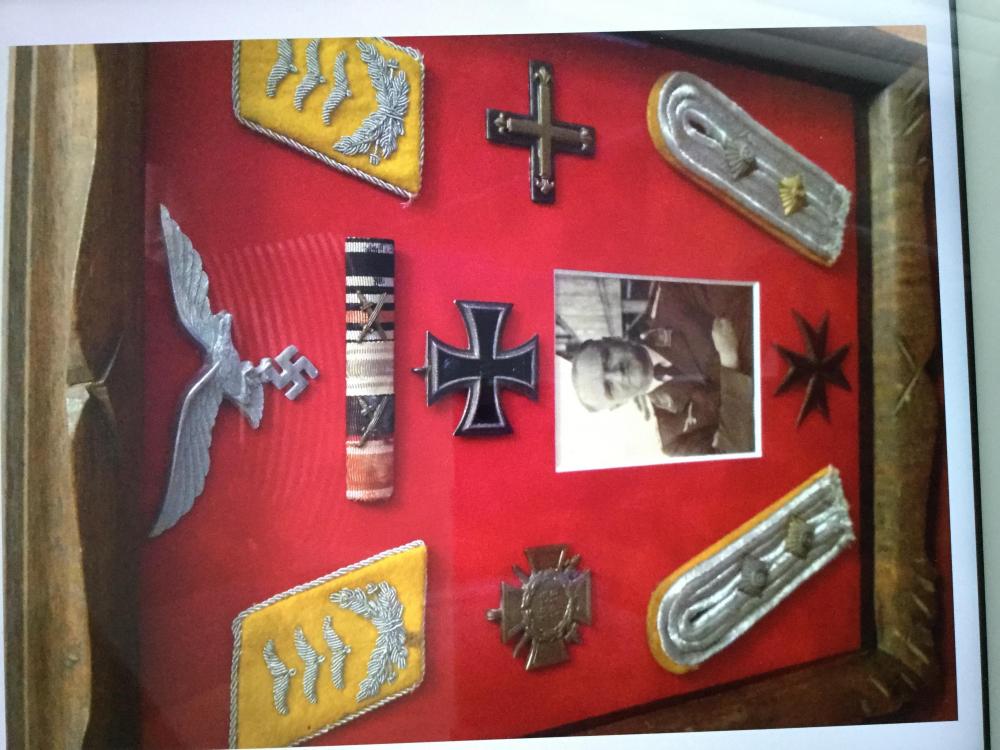 Das Bundesarchiv and Deutsche Dienststelle for any records held by these agencies. Would anyone on this forum be able to further assist me please including suggestions on further research I can conduct?
Das Bundesarchiv and Deutsche Dienststelle for any records held by these agencies. Would anyone on this forum be able to further assist me please including suggestions on further research I can conduct?
A picture is worth a thousand words. I suspect this was taken after he was called up to serve in the Luftwaffe.
0 -
I am researching this Luftwaffe officer for the granddaughter of Major Buschmann and myself as I grew up with his son’s family. During the last week I have been on the Germany: Imperial: The Orders, Decorations and Medals of the Imperial German States as his granddaughter has some of his World War 1 awards. Most things I know and have learned are on that forum. In summary he served Germany in World War 1 including as a pilot, was in the Freikorps and was called up to serve in the Luftwaffe where he served as a transport aircraft pilot and progressed up the ranks to Major. He was reported as missing in action at the time of the Stalingrad airlift. I have applied to the Department Military Archives Das Bundesarchiv and Deutsche Dienststelle for any records held by these agencies. Would anyone on this forum be able to further assist me please including suggestions on further research that I can conduct?
0 -
15 hours ago, Claudius said:
"And of course the ribbon bar is fixed in wrong direction on the display"
Yes, and to reiterate the awards from L-R (when the ribbon bar is correctly positioned);
1) Iron Cross 2nd class,
2) Hindenburg Cross,
3) Baltic Cross -2nd Class,
4) Randow Cross w/swords
5) Turkish War Merit (Gallipoli Star)
I think the Randow Cross at the bottom of the display is a very clear indication that the 4th ribbon is the Randow Cross. (and that's the Baltic Cross on the right side) Overall, a very nice display of a family member.
It's not important to convey this to the granddaughter - but for those on this forum it is interesting and noteworthy that Major Buschmann included his Randow Cross on his ribbon bar. Usually after 1934 it was against Regulations.
Thank you. The granddaughter told me her father told her Major Buschmann had many more medals and badges but when Major Buschmann’s widow passed away in the early 1970s the relatives in Germany (presumably siblings, nephews, nieces) allegedly helped themselves to the best of his decorations. Dieter was an only child, migrated to Australia in the 1950s and never returned home. Again presumably these would have been awards from his service in the Luftwaffe. I have seen a photograph of Major Buschmann with Leutnant insignia so I assume he was called up in 1939/ 1940, served until missing in action in late 1942 and worked his way up to Major. Do you have any thoughts please on typical awards a Transport Pilot would have earned in this time period?
16 hours ago, Claudius said:"And of course the ribbon bar is fixed in wrong direction on the display"
Yes, and to reiterate the awards from L-R (when the ribbon bar is correctly positioned);
1) Iron Cross 2nd class,
2) Hindenburg Cross,
3) Baltic Cross -2nd Class,
4) Randow Cross w/swords
5) Turkish War Merit (Gallipoli Star)
I think the Randow Cross at the bottom of the display is a very clear indication that the 4th ribbon is the Randow Cross. (and that's the Baltic Cross on the right side) Overall, a very nice display of a family member.
It's not important to convey this to the granddaughter - but for those on this forum it is interesting and noteworthy that Major Buschmann included his Randow Cross on his ribbon bar. Usually after 1934 it was against Regulations.
0 -
14 hours ago, Claudius said:
I suspect they were removed for display purposes. The Baltic and Randow didn't have ribbons and the person who created this presentation removed them for aesthetic, uniformity purposes.
Not what I would have done, but this is a family piece and as the owners they can display it anyway they like.
Unfortunately the son of Major Buschnann, Dieter, passed away 20 years ago. I suspect the shoulder straps & collar patches were removed by him from one of his father’s tunics & perhaps the EK II & Honour Cross were separate. It’s unfortunate the ribbon rings were removed presumably by Dieter, I agree it looks like it was done for display purposes. The granddaughter is very proud of Major Buschmann so I will be discrete how I explain the display to her.
13 hours ago, J Temple-West said:Exactly...
as an aside, and regarding the insignia, it would seem that the tabs and boards were taken off this officer's white summer uniform as the metal eagle is present. not a great photo but looking at the summer uniform eagle I would say that it's an example by Friedrich Linden, Ludenscheid. would love to see clearer photo's of obverse and reverse to confirm.
Thank you. When I next see the granddaughter I will seek a better photo including the reverse.
0 -
5 hours ago, VtwinVince said:
Hmmm, interesting. I can't find anything on him in the Luftwaffe officer's database, but he's got a Baltic Cross ribbon in third place, what looks like a Freikorps award (Randow Cross?) in fourth place and possibly a Turkish War Medal at the end.
Thank you for your prompt response and advice. The ribbon bar is quite faded with age which I imagine makes it harder to identify. I will research Turkish medals of that era for the first ribbon. It looks orange in colour with white borders. The other ribbon bars now make sense as they match the medals in the frame. His granddaughter told me her father removed these items from one of his father’s tunics as it was moth eaten.
5 hours ago, VtwinVince said:Hmmm, interesting. I can't find anything on him in the Luftwaffe officer's database, but he's got a Baltic Cross ribbon in third place, what looks like a Freikorps award (Randow Cross?) in fourth place and possibly a Turkish War Medal at the end.
Thank you
4 hours ago, HeikoGrusdat said:Right... And of course the ribbon bar is fixed in wrong direction on the display
Thank you also, I will advise his granddaughter to turn around the ribbon bar in her display.
0


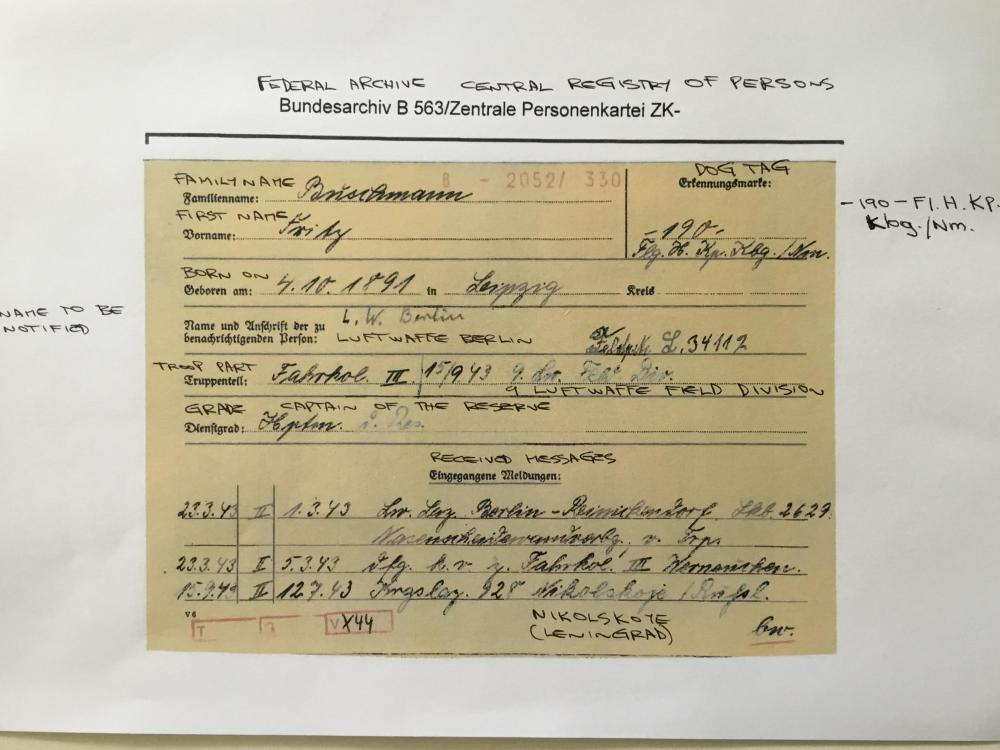
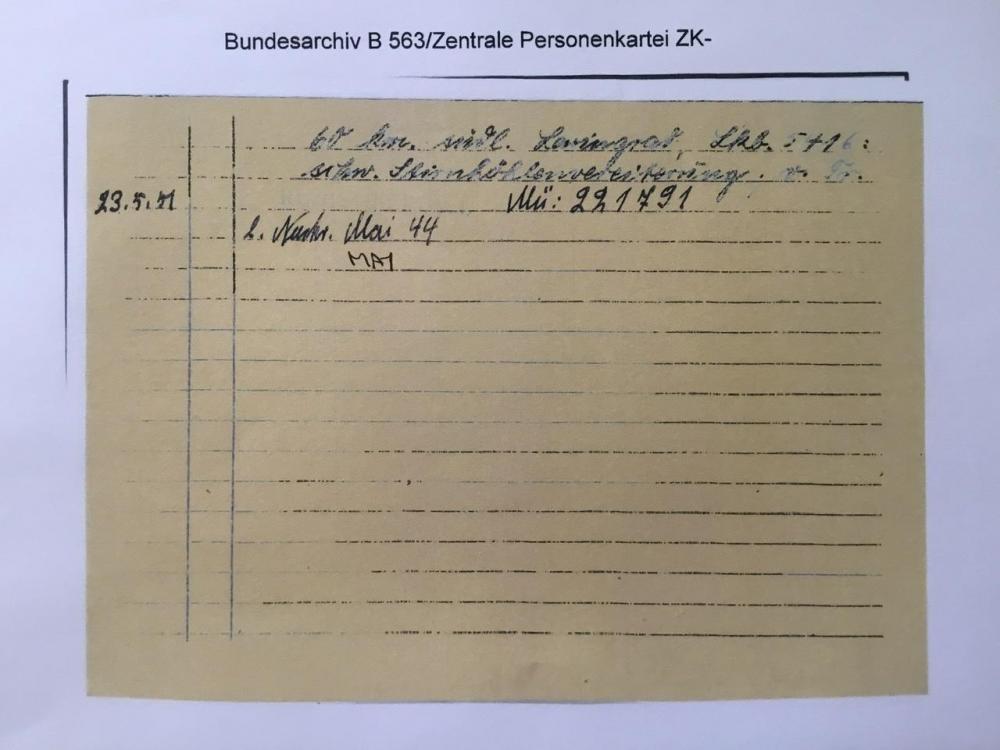
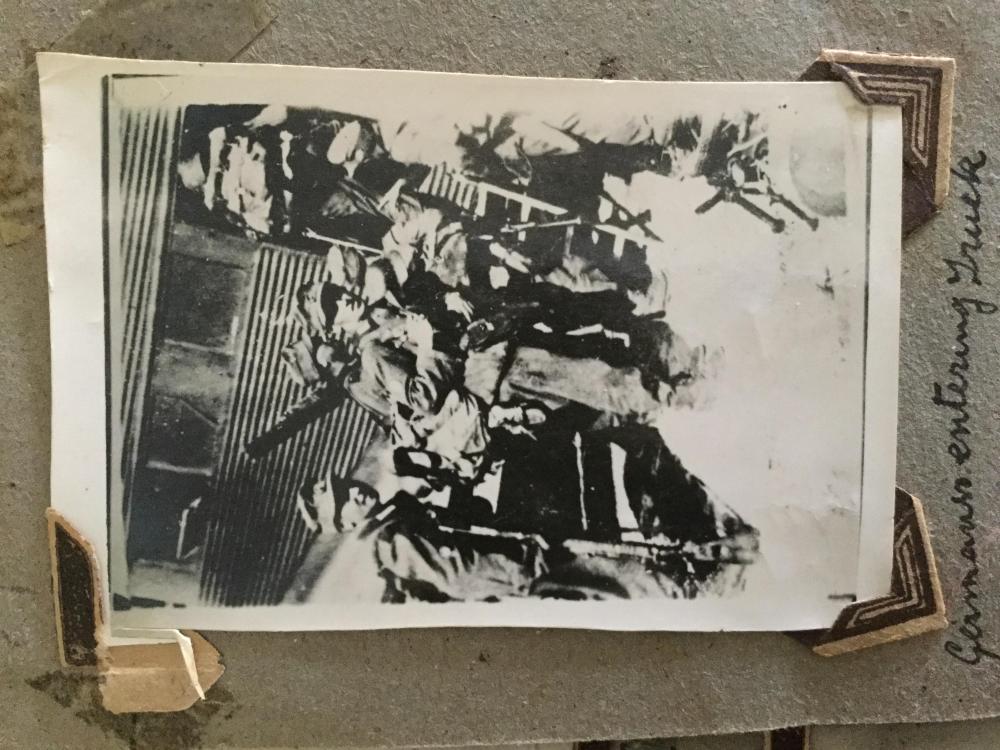

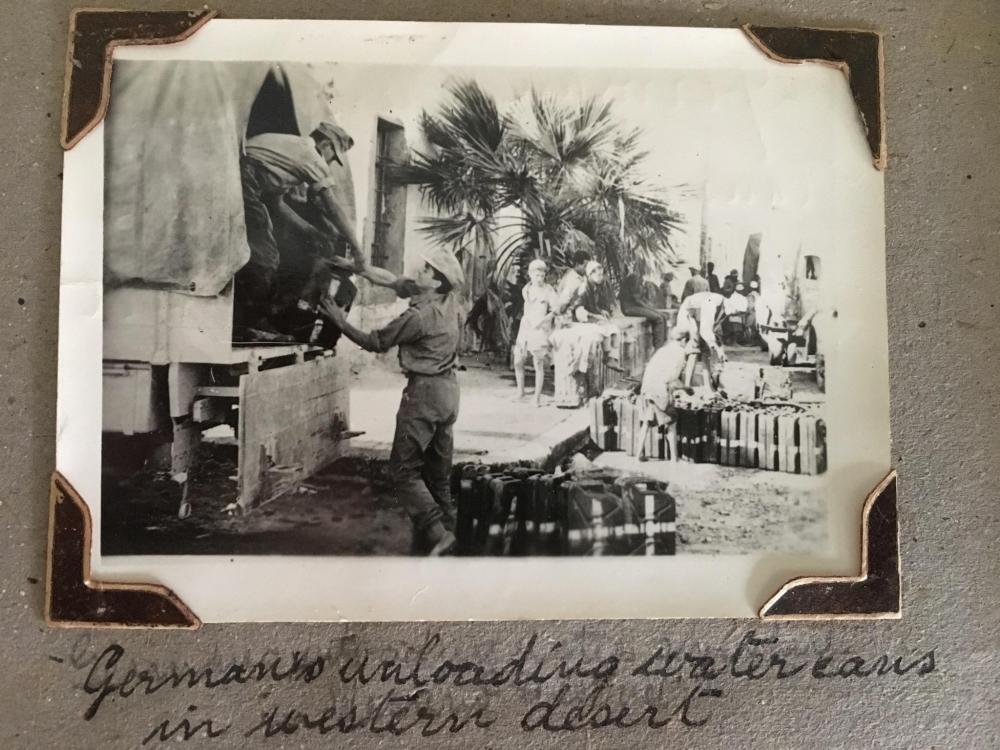
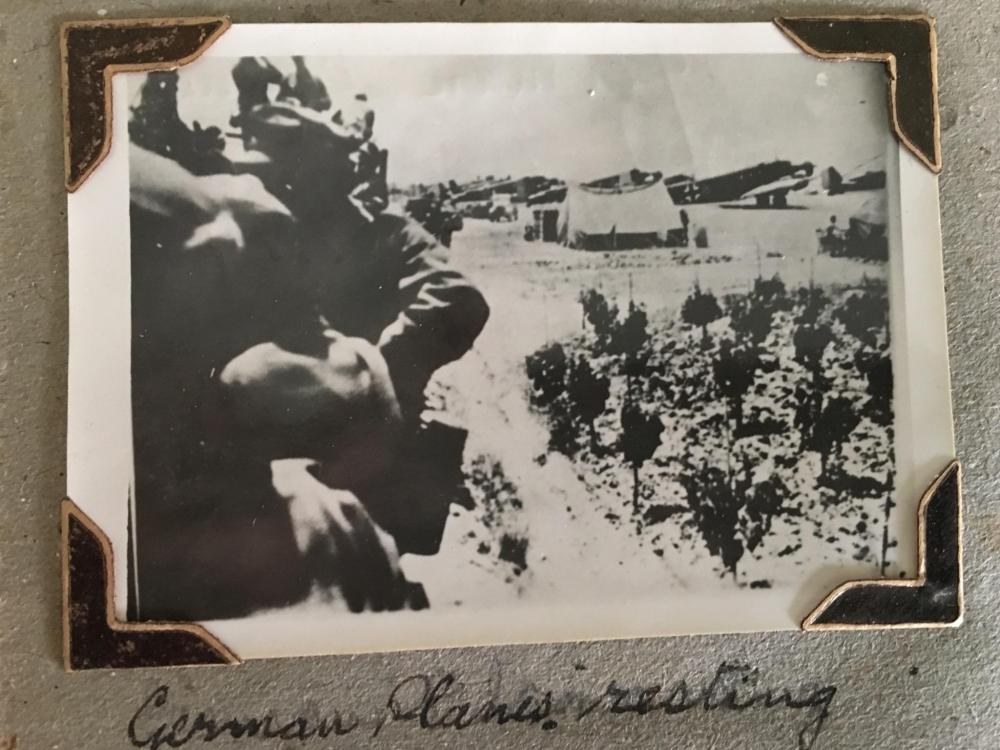
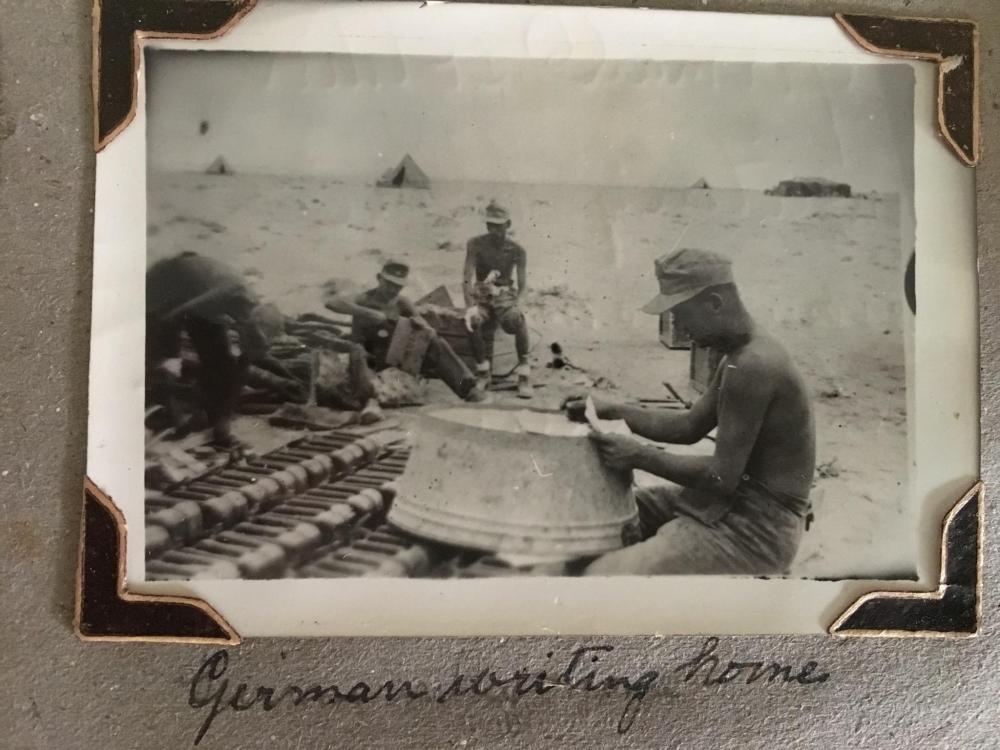
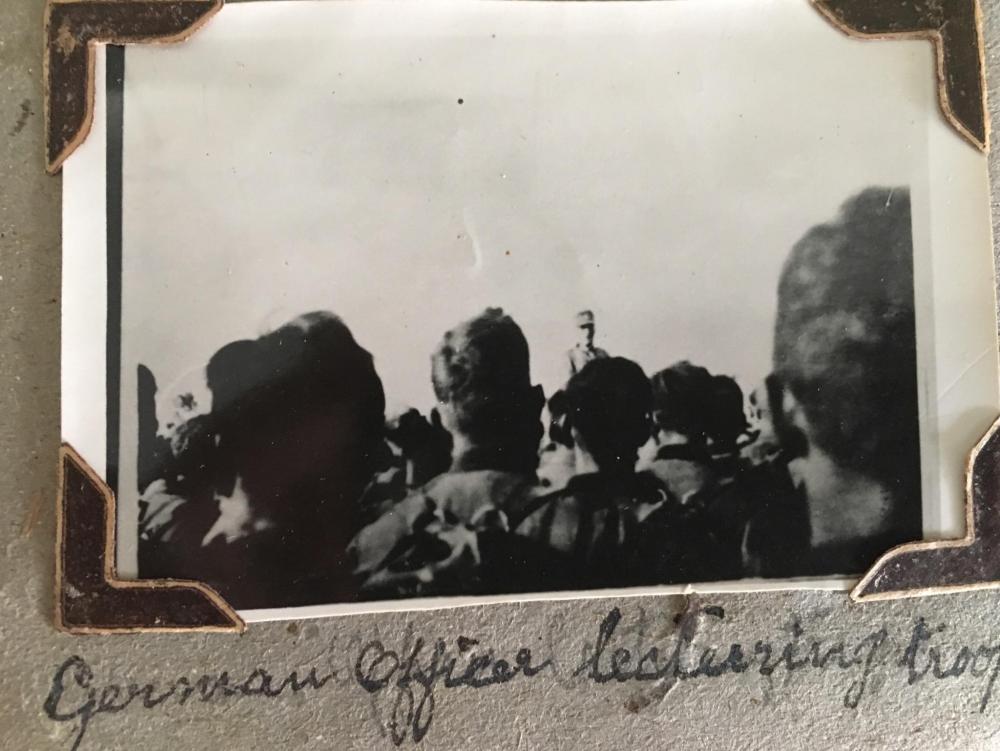
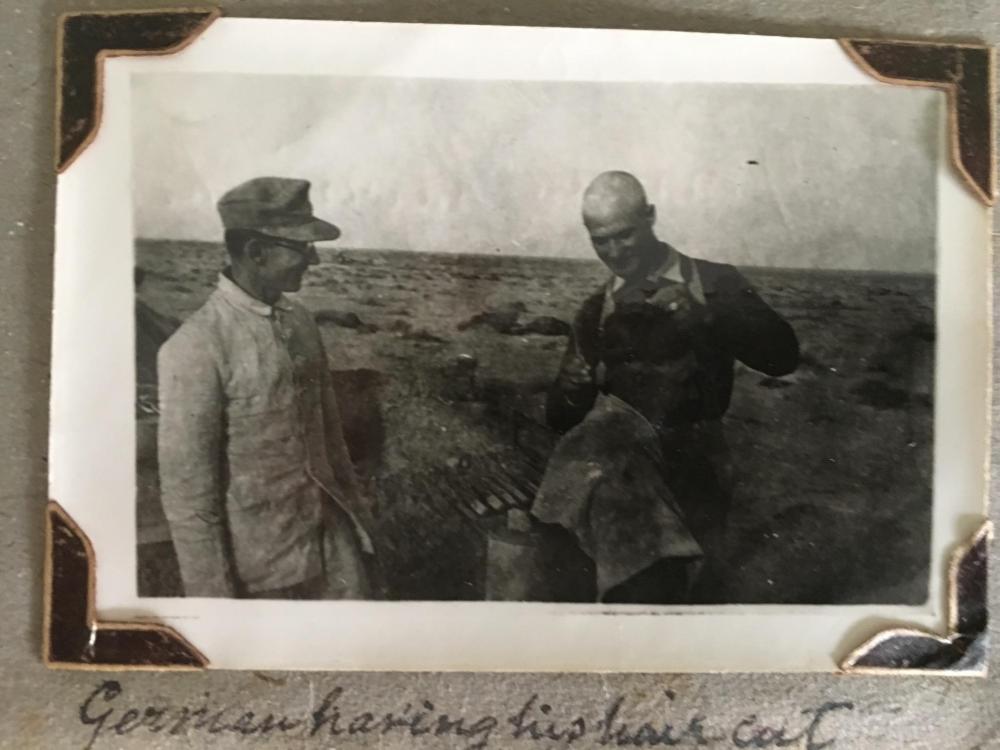
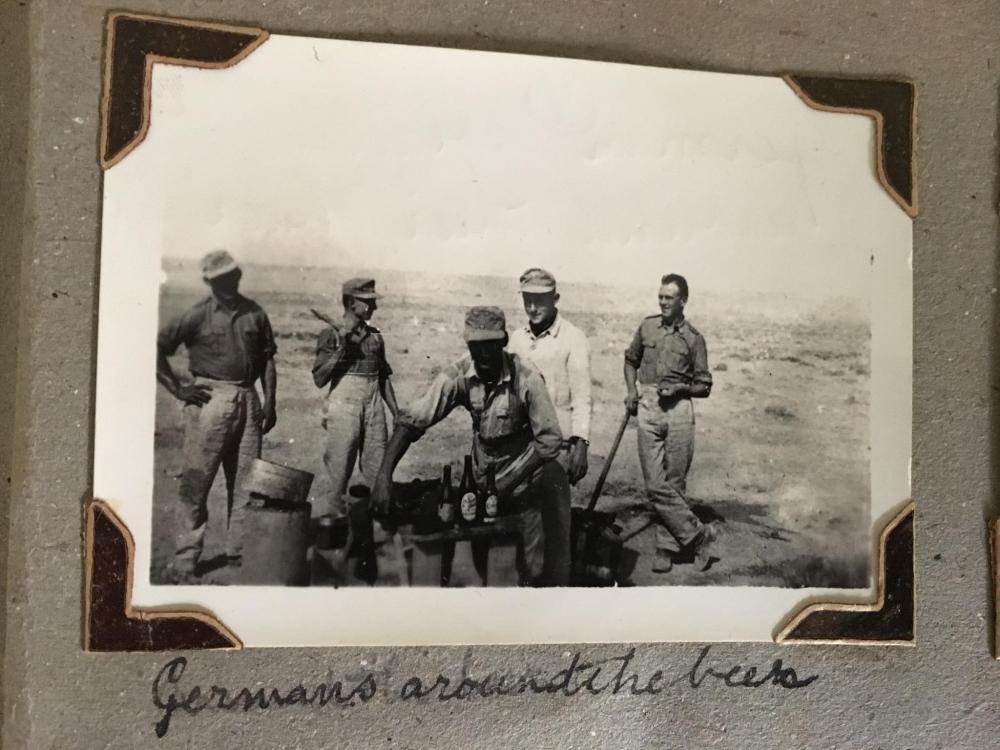
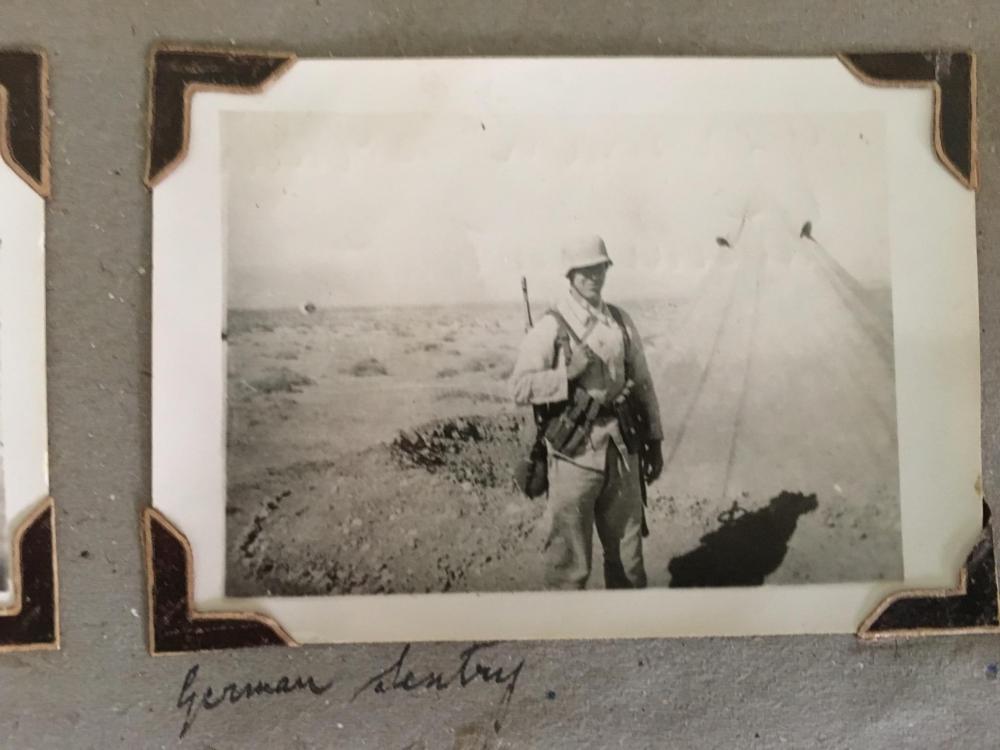
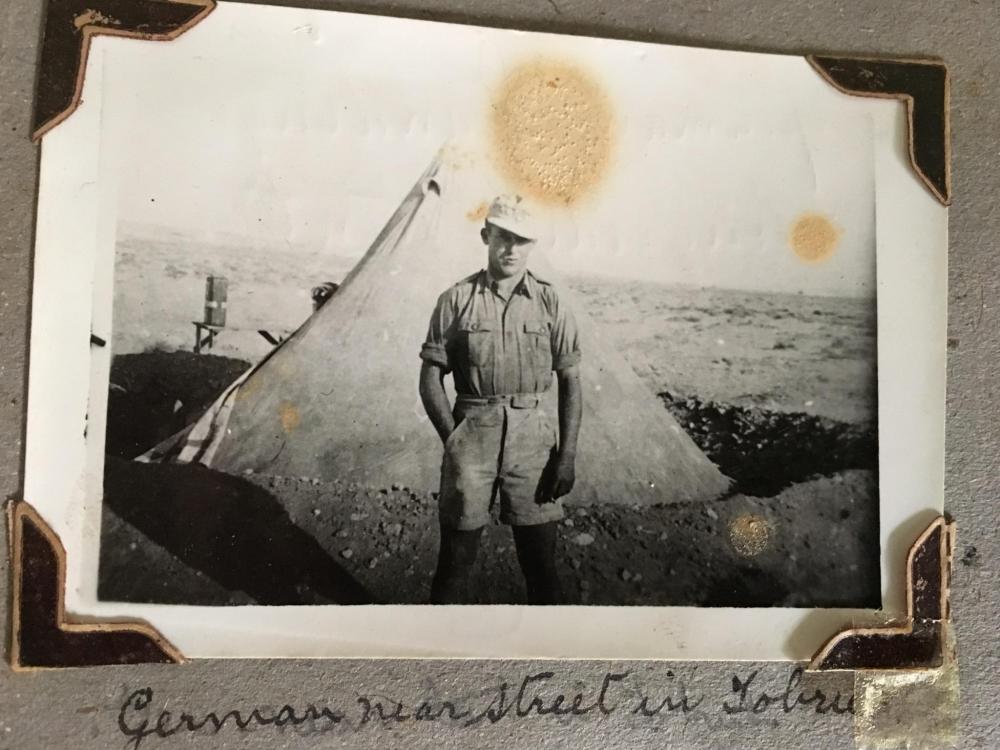
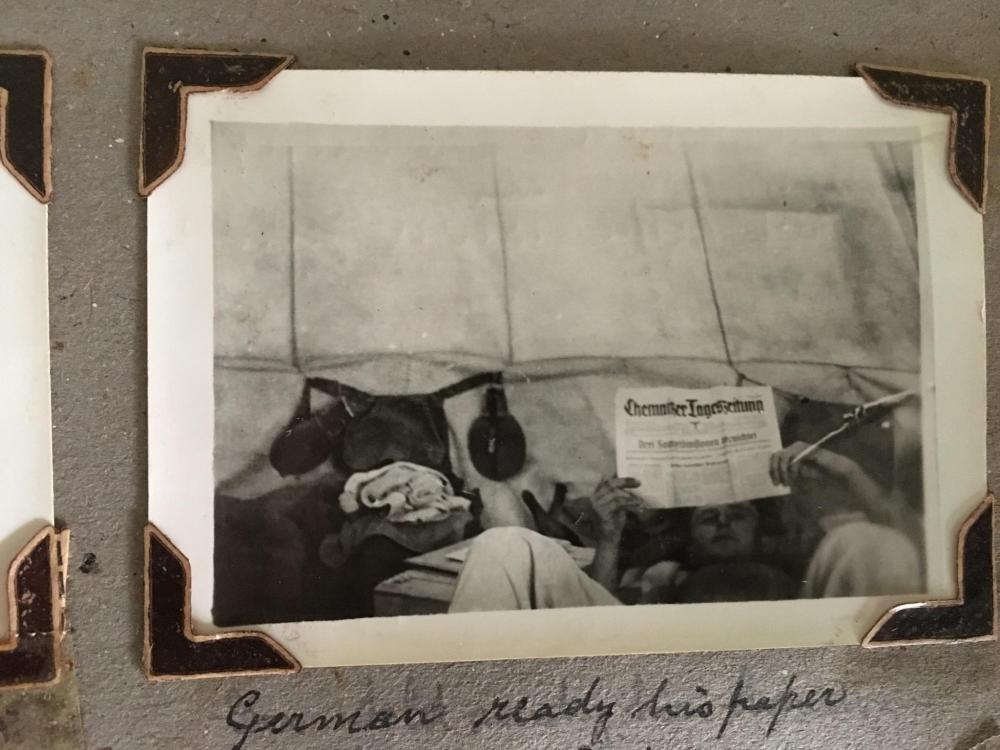


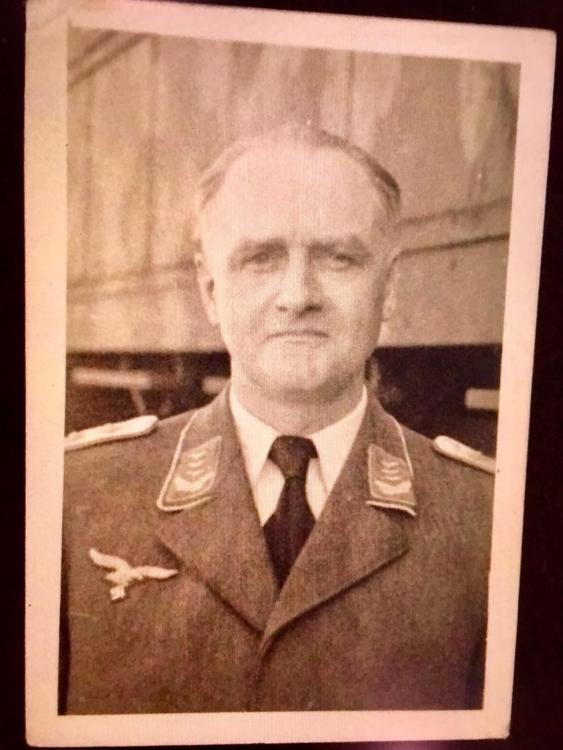







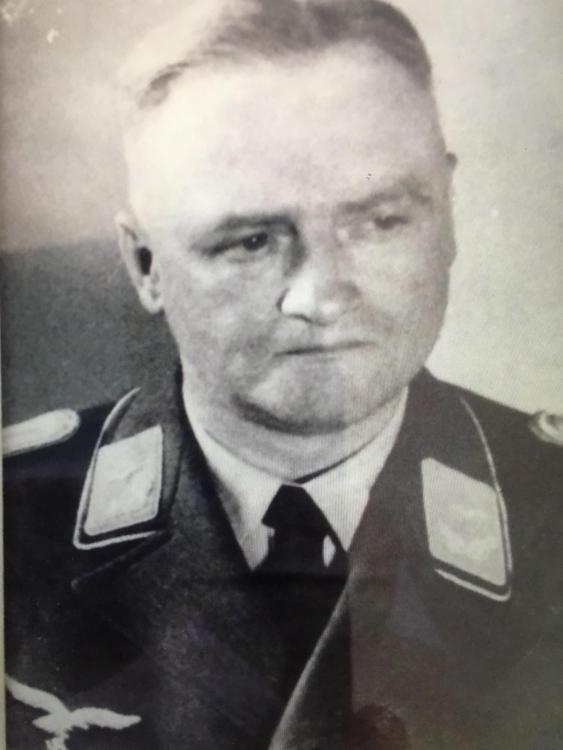
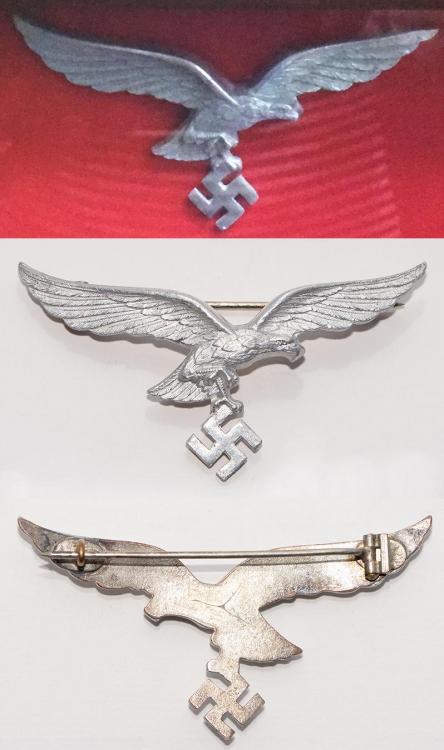
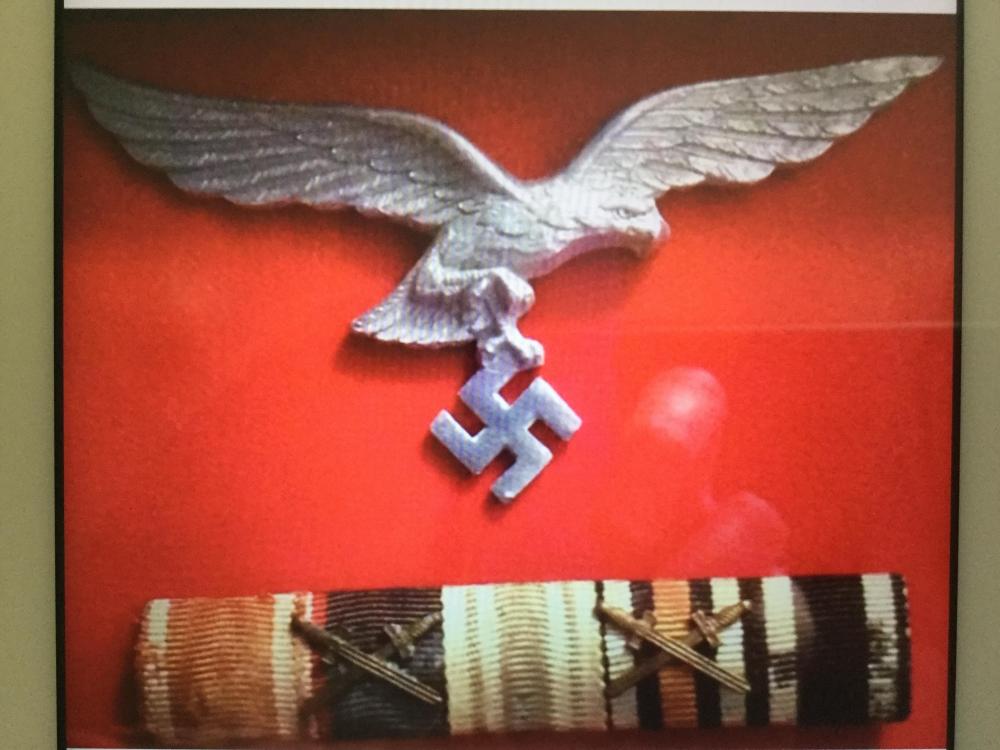
Major Heinrich Fritz Buschmann, Luftwaffe, Transportgeschwader
in Germany: Third Reich: Wehrmacht Medals, Decorations & Awards
Posted
I am in receipt of a response from the Red Cross on the fate of Hauptmann Fritz Buschmann. The provided Appraisal report dated 19 January 1979 concludes that ‘it is very likely that he died on May 9. 1944 in the fighting in Crimea.’ The cover letter states his unit as ‘Flieger-Gerate-Ausgabestelle 52/XI und 53/XI’, Google translate states this means ‘Aviation Equipment Issuing Point 52/XI and 53/XI’. This appears to be a logistical unit. I was very surprised to receive this information as the last unit he was part of to my knowledge was the 9th Luftwaffe Field Division based near Leningrad. Unfortunately the Red Cross did not provide any details on their investigation so I am at a loss to understand how he moved from one end of the eastern front to the other. Sadly both the 9th Field Division and his Luftwaffe unit in Crimea were pretty much destroyed around the same time. Any advice would be greatly appreciated.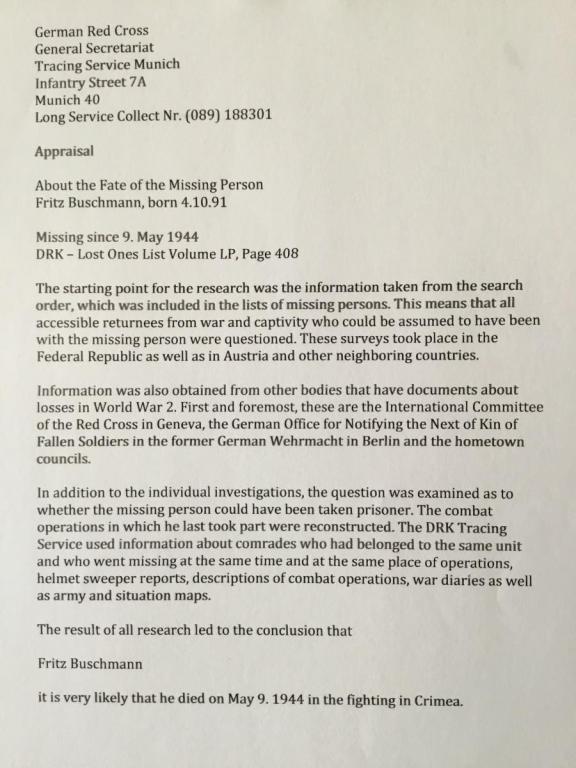
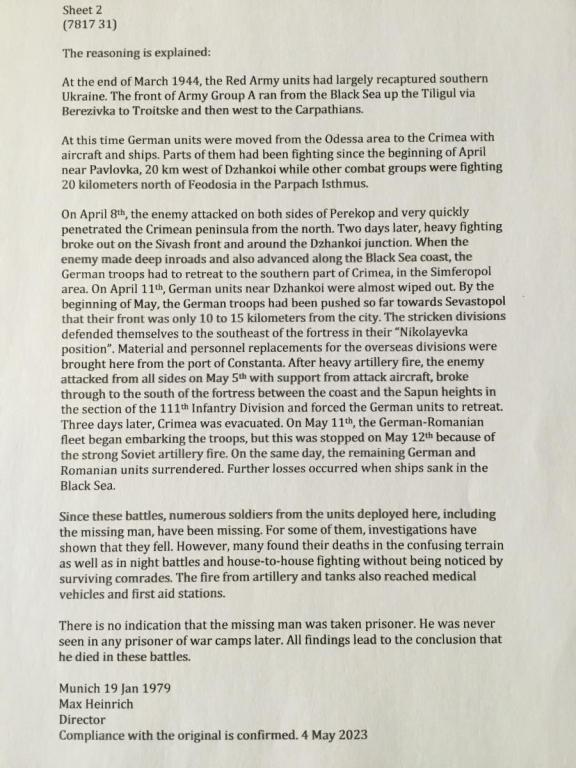
P.s. I tried to upload the original German Red Cross Appraisal report however it would not upload due to the size. The translated version was prepared by me using Google translate.